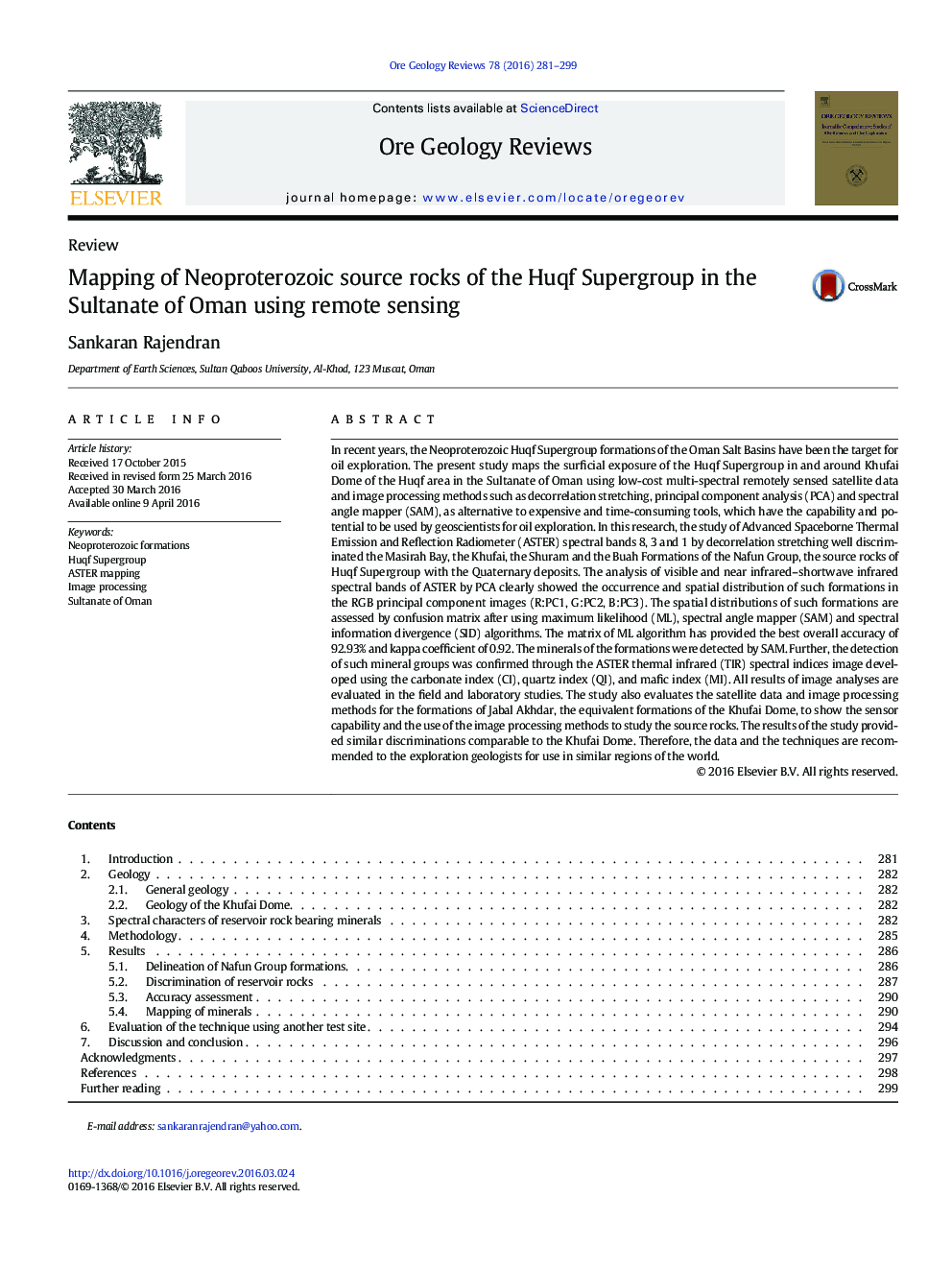| Article ID | Journal | Published Year | Pages | File Type |
|---|---|---|---|---|
| 4696862 | Ore Geology Reviews | 2016 | 19 Pages |
•Outcropping source rocks for oil exploration are mapped using satellite data.•Occurrence and distribution of rocks are discriminated using image processing methods.•Minerals of source rocks are detected and confirmed by SAM and ASTER indices.•Application of remote sensing technique is validated through field and laboratory studies.•Mapping methods are applied to similar region and evaluated.
In recent years, the Neoproterozoic Huqf Supergroup formations of the Oman Salt Basins have been the target for oil exploration. The present study maps the surficial exposure of the Huqf Supergroup in and around Khufai Dome of the Huqf area in the Sultanate of Oman using low-cost multi-spectral remotely sensed satellite data and image processing methods such as decorrelation stretching, principal component analysis (PCA) and spectral angle mapper (SAM), as alternative to expensive and time-consuming tools, which have the capability and potential to be used by geoscientists for oil exploration. In this research, the study of Advanced Spaceborne Thermal Emission and Reflection Radiometer (ASTER) spectral bands 8, 3 and 1 by decorrelation stretching well discriminated the Masirah Bay, the Khufai, the Shuram and the Buah Formations of the Nafun Group, the source rocks of Huqf Supergroup with the Quaternary deposits. The analysis of visible and near infrared–shortwave infrared spectral bands of ASTER by PCA clearly showed the occurrence and spatial distribution of such formations in the RGB principal component images (R:PC1, G:PC2, B:PC3). The spatial distributions of such formations are assessed by confusion matrix after using maximum likelihood (ML), spectral angle mapper (SAM) and spectral information divergence (SID) algorithms. The matrix of ML algorithm has provided the best overall accuracy of 92.93% and kappa coefficient of 0.92. The minerals of the formations were detected by SAM. Further, the detection of such mineral groups was confirmed through the ASTER thermal infrared (TIR) spectral indices image developed using the carbonate index (CI), quartz index (QI), and mafic index (MI). All results of image analyses are evaluated in the field and laboratory studies. The study also evaluates the satellite data and image processing methods for the formations of Jabal Akhdar, the equivalent formations of the Khufai Dome, to show the sensor capability and the use of the image processing methods to study the source rocks. The results of the study provided similar discriminations comparable to the Khufai Dome. Therefore, the data and the techniques are recommended to the exploration geologists for use in similar regions of the world.
Graphical abstractDecorrelated spectral bands 8, 3, and 1 of ASTER show the occurrence and spatial distribution of Nafun Group formations in the Khufai Dome region of Oman.Figure optionsDownload full-size imageDownload as PowerPoint slide
